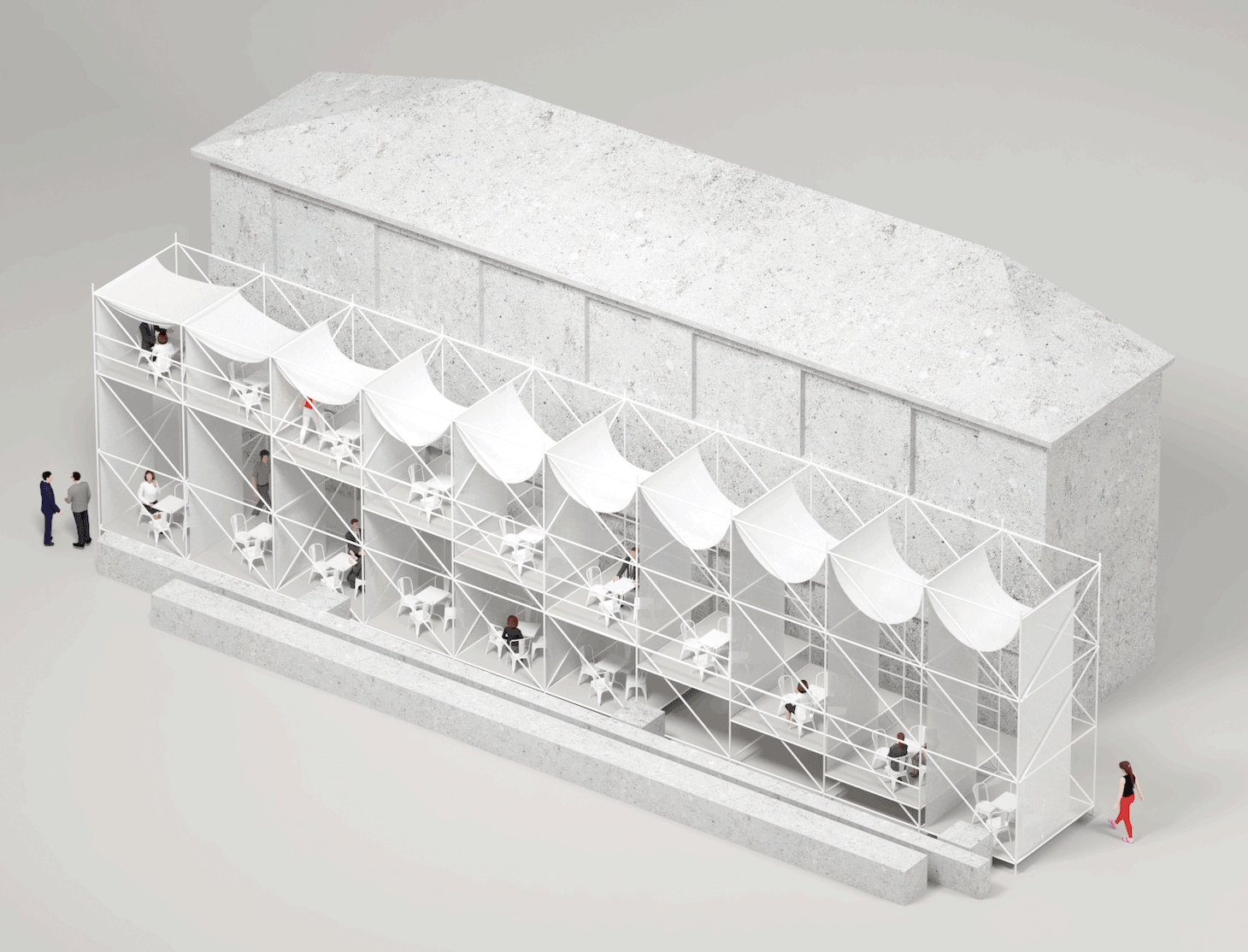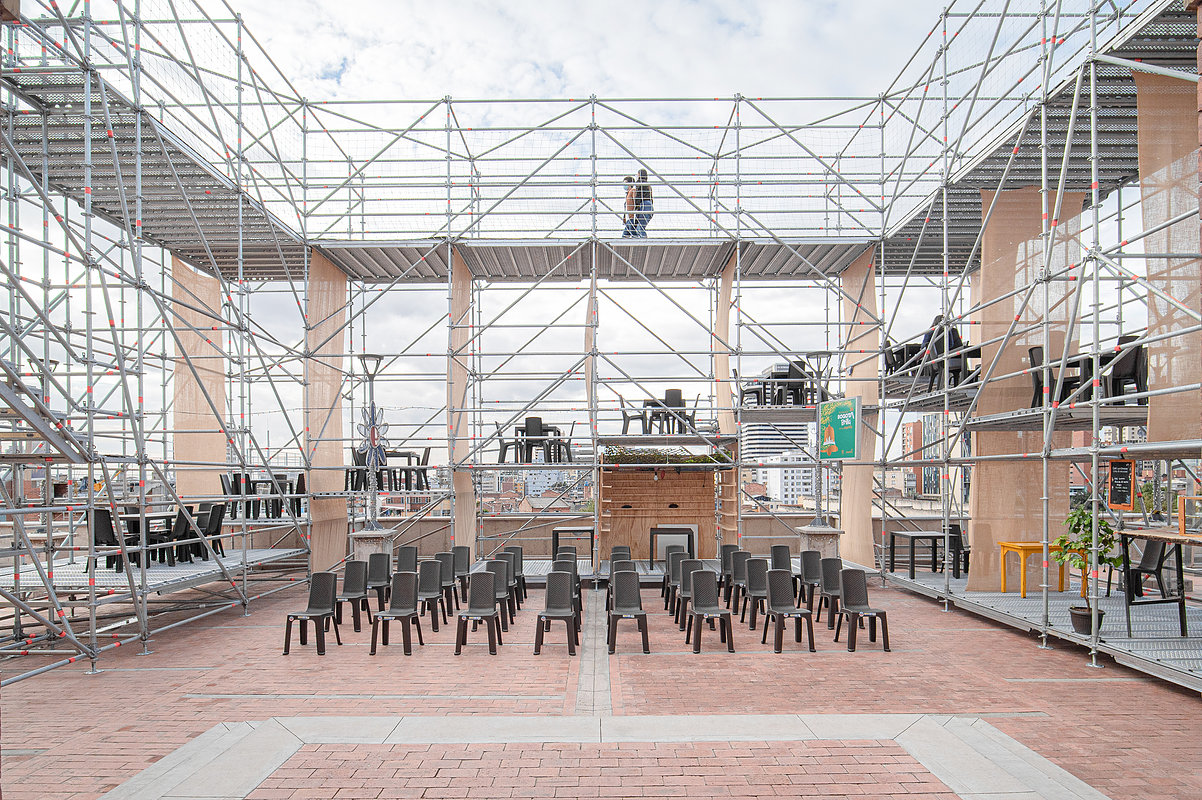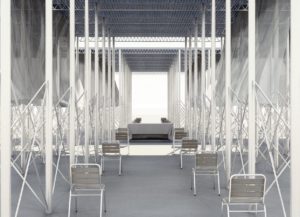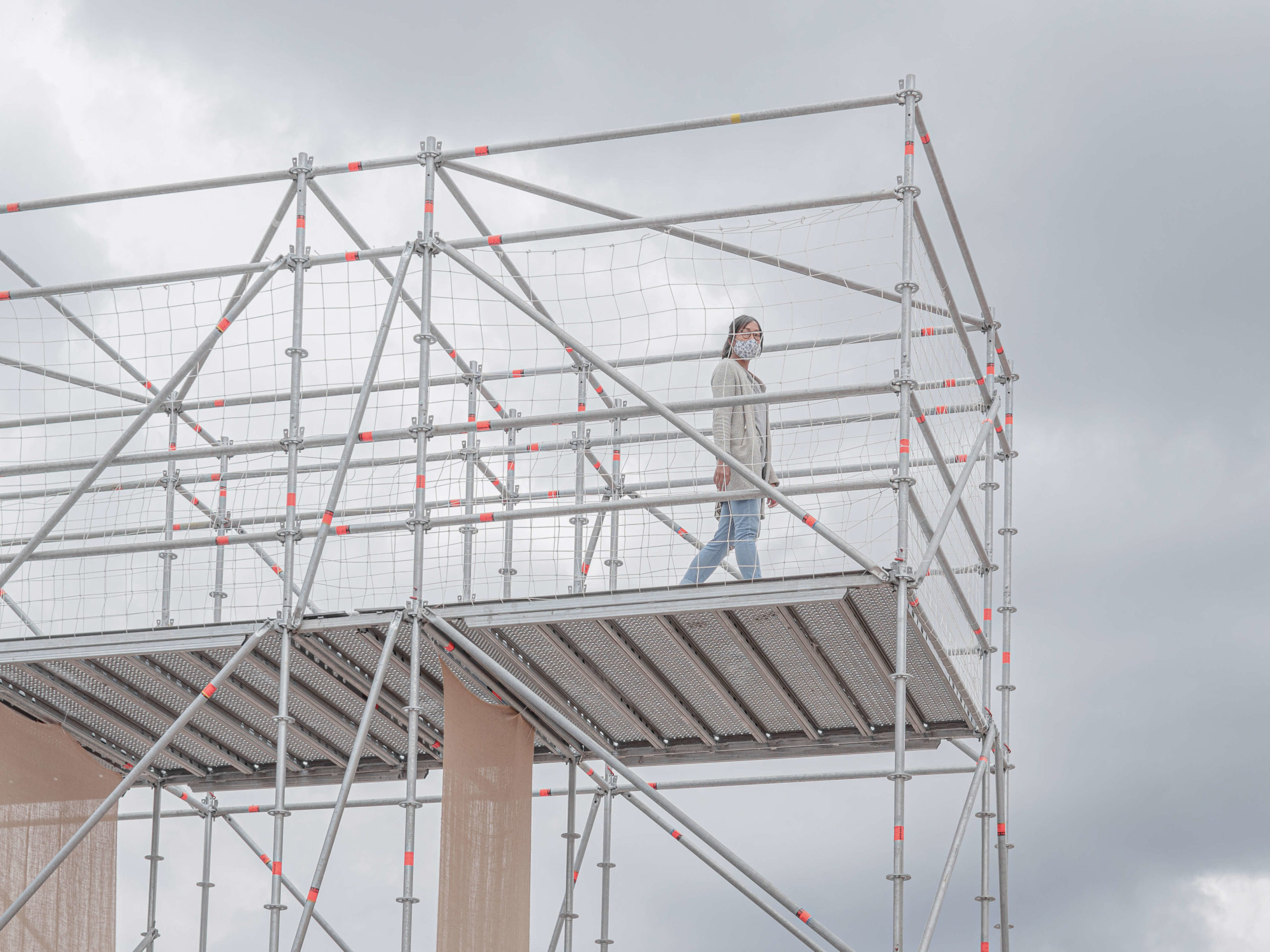Late last year, a scaffolding structure rose to abut the facade of the popular La Concordia market plaza in Bogotá—but the building wasn’t under construction. The three-story framework—a temporary intervention developed by architecture studio colab-19 with the Colombian Society of Architects and Taller Architects—was part of a city-sponsored campaign to support COVID-safe civic life during lockdown. As colab-19, architect Alejandro Saldarriaga (MArch II ’21) and urban designer German Bahamon designed the U-shaped La Concordia: Amphitheater to host a flexible program of outdoor dining, retail, and entertainment, all open to the public. While designers worldwide grappled with shortages of plexiglass and plywood as they scrambled to design for our new everyday life, colab-19’s multi-use installation was constructed with materials that are purposefully easy to source, assemble, and reuse—like the scaffolding, which was donated for the project by manufacturer Layher.

“We see existing systems as the opportunity—how can we use those resources to create architecture?” says Bahamon, of colab-19’s practice. “Scaffolding’s properties adapt very well to the realities that we’re living right now, in that you need a very cheap, quick, sustainable material,” notes Saldarriaga. Textiles that nod to the region’s culture augmented the structure’s rigid tectonics: a safety scrim of soccer goal netting wrapped around the third-floor observation deck, artificial turf lined the “green” roof, and local burlap fabric used to bag coffee and potatoes was hung to form soft walls. Though Amphitheater La Concordia was only up for several months, it conveyed a lasting message about temporary architecture’s role in creating a happier and healthier city.

Saldarriaga, currently based in his native Bogotá, and Bahamon, a Bogotano living in London, launched their remote practice in the summer of 2020 over Zoom, and the two have yet to meet in person. The same pandemic constraints that have dictated the terms of their virtual collaboration also inspire their approach to design. “It’s very special that we were born mid-pandemic, because we were asked to question all of the traditional models about practicing architecture,” says Saldarriaga. For colab-19, that means championing the ephemeral over the permanent, the readymade over the cast-in-place, and the sustainable over the disposable. Taking advantage of existing systems, processes, and materials, and engaging in partnerships between public, private, and academic sectors allows them to create resilient and responsive designs with minimal environmental and economic impact. With many construction infrastructure systems available universally, they hope their approach can be adopted (with regional adaptations) by other designers across the globe.
We’re strongly arguing for ephemeral architecture for emergency solutions—not only in the pandemic, but also for sustainability, and for social equality issues.
on applications for ephemeral and resourceful architecture in a post-COVID era
For colab-19, that means championing the ephemeral over the permanent, the readymade over the cast-in-place, and the sustainable over the disposable.
Colab-19’s first built project, an outdoor dining area for popular Bogotá market plaza La Perseverancia, was completed last summer and marked the team’s first experiment with scaffolding. Capitalizing on the material’s intrinsic verticality, they were able to create a two-story sidewalk eatery, expanding upward to allow greater capacity while preserving physical distance between patrons. And in their Cloud Parks concept, routine lawn care is adapted to demarcate socially distant picnic zones with cumulus-shaped patches mowed directly into the grass. As pandemic restrictions ease, the clouds can assume different sizes and configurations, or disappear altogether when the lawn regrows. After Hurricane Iota pummeled the Colombian islands of San Andrés and Providencia, colab-19 proposed (In)Habiting Rubble, a building system in which remnants from the islands’ devastated buildings are pulverized and bagged to create modular “bricks,” readily accessible materials for constructing new homes that simultaneously eliminates debris from the storm.

“Before going to the GSD, I wouldn’t have thought about cutting grass or scaffolding as architecture. Being exposed to that environment really opened my mind to a broader part of design,” Saldarriaga says. Recently, the pair have been exploring the design possibilities of slab concrete formwork systems to construct a temporary chapel for a COVID-safe Easter Mass, and are already working on a pandemic-ready, self-contained house that features its own gym, salon, and market.
Though founded in response to the specific needs posed by the global pandemic, colab-19 sees many emerging applications for ephemeral and resourceful architecture in a post-COVID era. “We’re strongly arguing for ephemeral architecture for emergency solutions—not only in the pandemic, but also for sustainability, and for social equality issues. Populations and cities are growing everywhere in the world,” Salarriaga points out. Speaking to Toshiko Mori’s “Temporary and Ephemeral Structures” studio at the GSD recently, Salarriaga and Bahamon encouraged students to question and challenge architectural conventions, and to embrace ephemerality as a tool for experimenting with full-scale prototypes and practicing “tactical architecture.” “As a profession, we need to start rethinking how we’ve been doing design. It’s something that’s healthy to do, every decade or so,” Saldarriaga says. Bahamon agrees: “This is the best time to redesign the world, and architects have a huge opportunity in front of us.”
